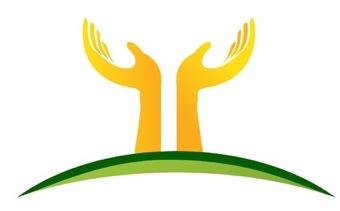
Stop the Starvation Cycle
Nonprofits are trapped in a “starvation cycle” – a concept identified by some of the largest oversight and watchdog organizations in the nonprofit world like Charity Navigator and Guidestar. It’s destabilizing good organizations that do important work and can eventually threaten their sustainability.
By Marsha Wallace
Co-founder, DFW
What images are conjured up when you hear the word starvation? You probably picture emaciated bodies, vacant stares and an aura of despair and hopelessness. In the case of a “starving” organization, you may picture nonfunctioning computers, inadequately trained staff, and a constant fight against insolvency due to lack of funding.
It might surprise you to learn that there is a pervasive and insidious disease afflicting nonprofits of every size and type. It’s called the Nonprofit Starvation Cycle. Ann Goggins Gregory and Don Howard described the cycle in three steps in an article published in Stanford Social Innovation Review in 2009.
Step One: Funders have unrealistic expectations of the costs of running nonprofits.
Step Two: Nonprofit executives struggle under the pressure they feel to meet their donors’ unrealistic expectations.
Step Three: Organizations skimp on vital systems, staff and resources and often under-report expenses to meet funders expectations.
This becomes a vicious cycle of starvation that undermines an organization’s ability to fulfill its mission. The starvation cycle has evolved over decades of efforts by government and charity watchdog agencies to drive accountability and efficiency in nonprofits. By measuring the ratio of overhead costs (fundraising and administration) vs. program costs, the conventional wisdom, (despite the fact that there is no industry standard for nonprofit overhead or programming costs,) has become: the best organizations are the ones that have the lowest overhead. It turns out that this is simply myth. This misconception has been labeled the Overhead Myth by some of the very agencies that provide access to the information relied on by funders and even some nonprofit organizations.
It’s a real problem for the nonprofit sector. Here’s a strong quote from the 2009 Coggins and Howard article in SSRI that explains the situation found:
—Anne Goggins Gregory and Don Howard, The Nonprofit Starvation Cycle
The inventor and futurist Buckminster Fuller said, “A problem well-stated is a problem on its way to being solved.” The problem is that too many nonprofits are caught in the deadly Nonprofit Starvation Cycle, to the detriment of the very existence of the organizations and the missions they seek to fulfill.
It is not news that organizations with robust capacity, including technology, financial systems, qualified, professional staff and fundraising are more likely to succeed but the consequences of funders’ unrealistic expectations may not be as well known. A 2012 study that examined the empirical data related to the Nonprofit Starvation cycle by Georgia State University Assistant Professor Jesse Lecy, and Elizabeth Searing, a PhD candidate in public policy, revealed that “organizations who fell into the lowest quintile of administrative costs to be at risk of falling prey to a financial shock. Fourteen years later, susceptibility to financial and program disruption based on the administrative ratio was empirically confirmed.”
Lecy and Searing point out that making financial information public created pressure on organizations that has proved counter-productive. “This practice guards against some flagrant abuses of public trust by unscrupulous nonprofits. But it also creates the conditions for a pursuit of financial efficiency that may cause a steady and self-perpetuating trend of cost-cutting which does more harm to an organization than good.” The Bridgespan Group, a nonprofit advisor and resource, also described a strong and self-reinforcing cycle which perpetuated a nonprofit’s starvation of its own infrastructure.
The clarion call has come.
Last year the Better Business Bureau, Charity Navigator and Guidestar came together and published a letter to the donors of America saying that: “The percent of charity expenses that go to administrative and fundraising costs — commonly referred to as “overhead” — is a poor measure of a charity’s performance.” They asked donors to consider “other factors of nonprofit performance: transparency, governance, leadership, and results.”
They created a website titled The Overhead Myth, and in 2014 provided a toolkit for nonprofits to use to help them educate donors and advocate for the end of The Nonprofit Starvation Cycle. There are others working to stop the damage unwittingly being done by conscientious donors. Dan Pallotta did hugely popular TED Talk addressing the dangers of underfunding nonprofits and the disparities between the public’s demand for results by the nonprofit sector vs. the for-profit sector, where spending on infrastructure is understood and expected. Of course, not all experts agree with everything Pallotta says, but most do agree that the conversation about overhead and the health of the nonprofit sector is important.
This is the time of year when charitable giving is highest. As you consider your charitable contributions, and I hope Dining for Women’s 13th Month campaign will be among them, please consider the full range of measurements of a nonprofit’s success: transparency, governance and results. If you value demonstrable impact and measurable outcomes, you need to support the organizations you love so that they can build the capacity they need to produce the results that you and they envision.
In a speech that has been viewed online more than 3.3 million times, Pallotta said: “The next time you look at a charity, don’t ask about the rate of their overhead, ask about the scale of their dreams.”
Dining for Women is dreaming big dreams for ourselves, for the organizations we fund, and for the women and girls we are able to serve.
